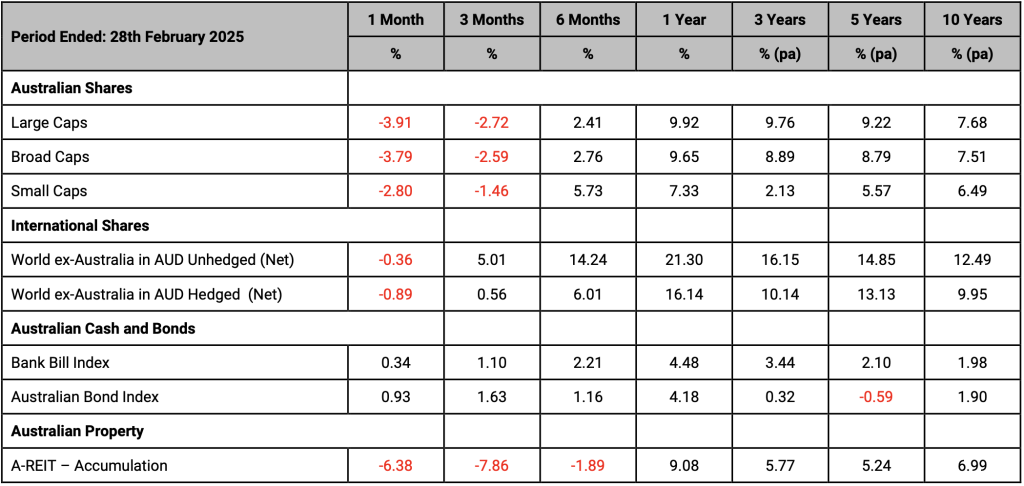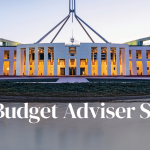Market Commentary February 2025
The positive sentiment that propelled investment markets in January dissipated in February. The threat of tariffs on Mexico, Canada and China by the United States together with valuation concerns for mega-cap technology companies following announcements by DeepSeek in January and rising risks of stagflation all contributed to the more circumspect stance of investors.
In February the Bank of England cut rates by 0.25% to 4.5% as inflation in the fourth quarter of 2024 reached 2.5%. In Australia, the Reserve Bank of Australia (RBA) cut the cash rate by 0.25% to 4.10%. This was the first rate cut by the RBA since November 2020. Australia’s four major retail banks were quick to react passing through the rate cut to mortgage holders post the announcement.
Australian large cap equities fell 3.91% in the month led by the Information Technology sector (-12.28%). Other sectors to fall sharply during the month were Health Care (-7.66%) and Energy (-515%). On the other hand, Communication Services (+6.44%), Utilities (+3.15%) and Consumer Staples (+1.47%) outperformed during the month. Small Cap Australian equities (-2.80%) outperformed large caps for the month.
Currency hedged global equities fell 0.36% for the month as the Australian dollar was largely unchanged versus the US dollar at month’s end closing at US$0.6209, down slightly from US$0.6218 a month earlier. Unhedged global equities fell 0.89% for the month.
Uncertainty regarding the impact of possible tariffs by the US government impacted US consumer sentiment with the Conference Board consumer confidence index for February falling from 105.3 in January to 98.3 in February. In addition, the Conference Board’s expectations index (an indication of expectations for future spending growth) weakened to an eight month low of 72.9 raising the possibility of a period of stagflation for the US economy. Bond yields in both Australia and the US reflected the uncertainty with the US 10 year bond yield falling 33 bps to 4.21% and the US 2 year bond yield falling 21bps to 3.99%. In Australia, the Australian 2 year bond yield fell 7 bps to 3.73% whilst the Australian 10 year bond yield fell 14 bps to 4.29%.
Benchmark Returns

Article source: Personal Financial Services Ltd (PFS)
Disclaimer: Research Insights is a publication of Personal Financial Services Limited ABN 26 098 725 145 (PFS). Any advice in this article is general advice only and does not take into account the objectives, financial situation or needs of any particular person. It does not represent legal, tax or personal advice and should not be relied on as such. You should obtain financial advice relevant to your circumstances before making product decisions. Where appropriate, seek professional advice from a financial adviser. Where a particular financial product is mentioned, you should consider the product disclosure statement before making any decisions in relation to the product and we make no guarantees regarding future performance or in relation to any particular outcome. Whilst every care has been taken in the preparation of this information, it may not remain current after the date of publication and Personal Financial Services Ltd (PFS) and its related bodies corporate make no representation as to its accuracy or completeness.



